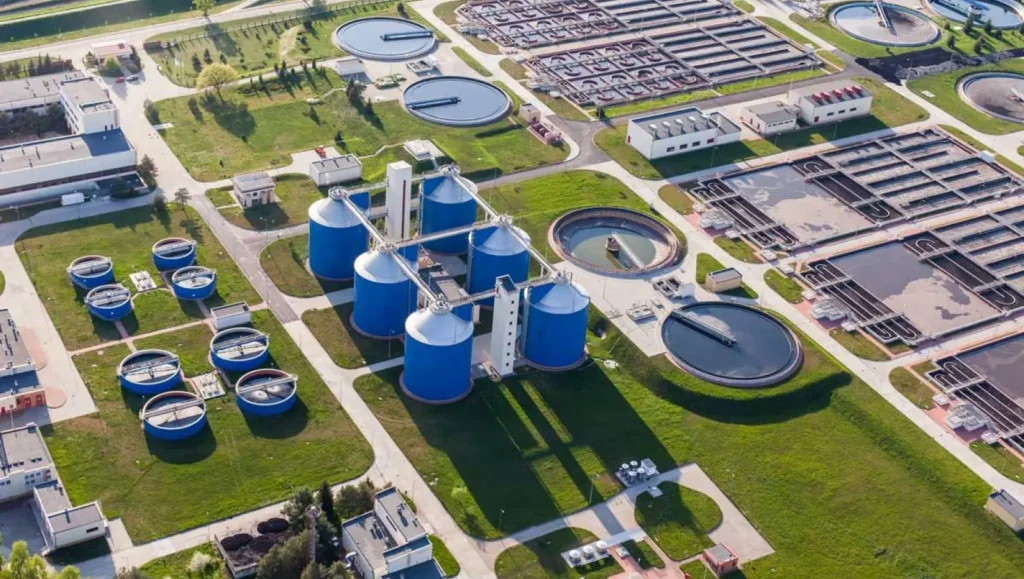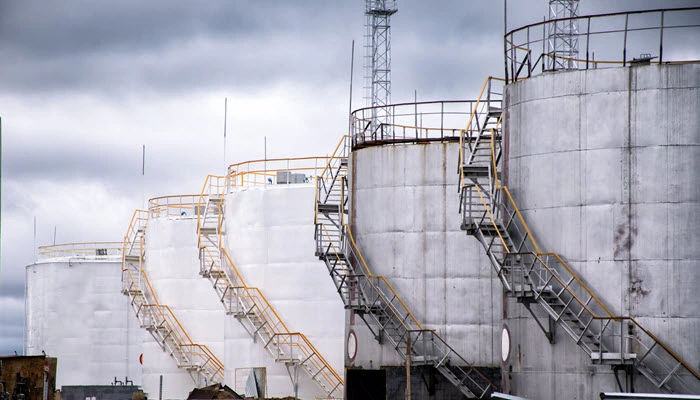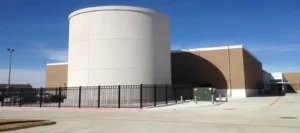As the world grapples with the effects of climate change, transitioning to more sustainable practices across all sectors of industry becomes increasingly urgent. In the oil and gas sector, reducing the environmental impact of above ground storage tanks (ASTs) is critical to minimizing pollution and safeguarding natural resources for future generations. If you operate ASTs, conducting a comprehensive environmental impact assessment of Above Ground Storage Tanks (EIA) is essential to developing sustainable and eco-friendly solutions. A robust EIA will help you identify risks, evaluate alternatives, and implement measures to curb emissions, prevent spills, and protect surrounding wildlife and habitats. By taking a proactive approach to understanding and mitigating the environmental effects of your AST operations today, you can build a greener and more sustainable business for tomorrow. The time for action is now. Our planet depends on it.
The Effects of Above Ground Storage Tanks on the Environment
Above ground storage tanks (ASTs) are large containers used to store petroleum products, chemicals, and other hazardous wastes. Although economical, ASTs can have significant effects on the surrounding environment if not properly maintained or regulated.
One of the major environmental impacts of ASTs is the contamination of soil and groundwater from spills and leaks. Hazardous substances like petroleum hydrocarbons can leak from tanks over time due to corrosion and damage, polluting the soil and seeping into groundwater aquifers. Oil tank leak health effects both on wildlife, and human. Implement strict monitoring, spill prevention measures, and leak detection systems to avoid and mitigate environmental contamination.
ASTs also pose risks to air quality by volatile organic compounds emissions (VOCs) which can exacerbate respiratory illnesses and other health issues. Operators should follow regulations on emission limits and install vapor recovery units to help curb air pollution.
In addition, the industrial appearance of AST facilities can detract from the visual esthetics of an area. Proper screening, landscaping, and facility maintenance help address esthetic impacts.
Finally, ASTs must be properly decommissioned at the end of their operational life to avoid long-term environmental damage. Complete removal of tanks, contaminated soil, and other infrastructure is required along with remediation of any pollutants to return the site to an environmentally sound state.
With diligent management, regulation, and eventual decommissioning, the environmental footprint of ASTs can be reduced. However, preventing pollution at the source through more sustainable energy infrastructure and transportation systems is key to mitigating impacts in the long run. Overall, a balance of environmental, social and economic factors is needed for sustainable and ethical solutions.

Mitigating Environmental Pollution From Above Ground Storage Tanks
To mitigate environmental pollution from above ground storage tanks (ASTs), several sustainable solutions should be considered:
Proper containment measures must be put in place to avoid spills and leaks of hazardous materials into the surrounding area. Impermeable barriers, containment dikes, and double-walled ASTs are effective options. Routine inspections and maintenance should also be conducted to identify and repair any damage.
Vapor recovery units can be installed to capture and recycle volatile organic compounds (VOCs) and other emissions, reducing pollution. Venting emissions should be minimized where possible. Scrubbers and filters can also be used to clean and treat remaining emissions before releasing into the atmosphere.
AST facilities should develop and implement spill prevention, control and countermeasure (SPCC) plans to establish procedures in the event of a spill. Proper training must also be provided to all personnel to ensure plans are executed effectively.
When ASTs reach the end of their service life, all hazardous materials and wastes must be properly cleaned and disposed of according to regulations. Tanks should then be dismantled and removed to avoid contamination of the site.
Remediation of any pre-existing pollution around ASTs may also need to be performed, which can include bioremediation, soil vapor extraction, or groundwater treatment.
These solutions, when combined, can help limit and mitigate environmental damage from ASTs. To achieve optimal sustainability and compliance, we will need to continually monitor and update procedures as technologies and regulations change. We can minimize the ecological footprint of ASTs with proper safeguards and stewardship.
How to reduce environmental footprint by Technologies and Methodologies.
New technologies and methodologies are enabling reduced environmental impact from above ground storage tanks (ASTs). These sustainable solutions aim to improve energy efficiency, decrease pollution, and optimize land usage.
Leak Detection Systems
Advanced leak detection systems can identify emissions from ASTs before major spills occur. Optical gas imaging cameras detect hydrocarbons and volatile organic compounds. Acoustic monitors detect the sound of escaping gasses. Pressure and flow meters detect changes that could indicate leaks. These systems enable prompt leak repair, minimizing product loss and environmental damage.
Secondary Containment
Impermeable barriers and liners provide secondary containment around ASTs in case of spills or leaks. Synthetic liners made of high-density polyethylene (HDPE), polypropylene (PP), and polyvinyl chloride (PVC) prevent spilled materials from seeping into the soil. Earthen dikes and concrete containment walls also provide effective containment. Having a secondary system ensures that the surrounding area does not get exposed to hazardous materials.
Vapor Recovery Units
Vapor recovery units (VRUs) capture and recover hydrocarbon vapors emitted during loading and unloading of ASTs. The system compresses the recovered vapors and returns them to the tanks, thereby reducing total emissions into the atmosphere. VRUs significantly decrease pollution from volatile organic compounds (VOCs) and hazardous air pollutants (HAPs). Onsite heaters and boilers can use recovered vapors as fuel.
Solar Power
Solar panels on AST rooftops or nearby generate renewable energy to power critical tank operations. Solar-powered tank gages, lighting, leak detection systems, and vapor recovery units decrease reliance on fossil fuels. AST facilities can reduce their overall carbon footprint in a sustainable manner by utilizing solar energy.
These technologies and methodologies enable environmentally-friendly AST operations through improved efficiency, reduced waste, and lower emissions. AST operators can implement these solutions to increase sustainability and meet regulatory requirements.
Regulations and Compliance for Above Ground Storage Tanks
To operate an above ground storage tank (AST) in a safe, responsible and legally compliant manner, owners and operators must follow all applicable environmental regulations. Failure to do so can result in legal penalties, fines, and in some cases, criminal charges.
Spill Prevention Control and Countermeasure (SPCC) Plan
According to the U.S. The Environmental Protection Agency (EPA) requires any AST with an oil storage capacity of 1,320 gallons or more to have a Leakage Prevention Control and Countermeasure (SPCC) Plan. The SPCC Plan helps prevent oil spills, ensures prompt response if a spill occurs, and complies with the Oil Pollution Act of 1990. Plans must be certified by a Professional Engineer and reviewed every 5 years.
Hazardous Waste Generation
The Resource Conservation and Recovery Act (RCRA) regulates the generation of hazardous waste from ASTs.
Substances stored in ASTs that are ignitable, corrosive, reactive or toxic may qualify as hazardous waste. Operators must evaluate if waste meets hazardous criteria, properly containerize and label waste, obtain an EPA identification number, and comply with manifesting, storage, and disposal requirements. Some states have additional regulations for hazardous waste that may also apply.
Air Emissions
The Clean Air Act (CAA) regulates air emissions, including volatile organic compounds (VOCs), from ASTs. Tanks that store volatile petroleum products or chemicals may require permits. Operators must install emission controls like floating roofs, vapor recovery units or flare systems to reduce emissions. The authorities may also mandate periodic monitoring and reporting.
Compliance with environmental regulations for ASTs requires thorough understanding of requirements, careful operational controls, adequate staff training, and detailed recordkeeping. Working closely with regulatory agencies and environmental consultants helps ensure that you interpret regulations properly and remain in compliance with operations6. By making environmental stewardship a priority, AST owners and operators play an important role in safeguarding public health and protecting natural resources.
The Future of Environmentally Friendly Above Ground Storage Tank Design
The future of above ground storage tank (AST) design is trending toward more sustainable and environmentally friendly options. As environmental regulations tighten and public concern over industrial pollution grows, companies are exploring greener alternatives for storing chemicals and hazardous materials.
Double-Walled Tanks
Double-walled ASTs feature an inner and outer tank with an interstitial space in between that can hold a leak detection material. This design prevents spills from contaminating the surrounding soil and groundwater. The space between the walls allows for electronic monitoring equipment to detect even minute leaks. These more robust tanks may have higher upfront costs but provide long-term environmental safeguards and peace of mind.
Emergency Containment Berms
ASTs can place within emergency containment berms made of steel, concrete, or synthetic liners for added protection. These berms are impermeable barriers that surround the tank to contain any spills in the event of a leak or rupture. They should be large enough to hold the tank’s maximum capacity plus additional freeboard for rain and firefighting efforts. Containment berms are an economical way to significantly reduce the risk of pollution from ASTs.
Chemical-Resistant Tank Materials
Traditional steel ASTs can corrode and leak over time when storing harsh chemicals. Newer tank materials like fiberglass, polyethylene, and thermoplastic offer superior chemical resistance and durability. These inert materials are non-reactive and non-corroding, preventing hazardous substances from compromising the tank walls. Although often more expensive, chemical-resistant tanks have a longer lifespan and reduce safety risks and liability concerns.
AST designers are focusing on building more sustainable and ecologically-friendly storage solutions for the future.
Regulations and public demand for greener industrial practices will drive continued innovation in double-walled tanks, containment berms, chemical-resistant materials and other technologies that allow us to store hazardous materials responsibly and safely. By implementing these alternative designs, companies can avoid pollution, ensure compliance and operate with the environment in mind.
Conclusion
As a society, we must make environmentally-conscious decisions about how we develop and utilize resources. Proper management is necessary for mitigating the risks associated with the use of above ground storage tanks, despite their essential service. By following recommended assessment procedures and implementing sustainable practices, we can reap the benefits of above ground storage while safeguarding our communities and natural surroundings. Our shared environment depends on responsible stewardship and proactive leadership. The future is unwritten, and together we have the power to shape it for the better.




